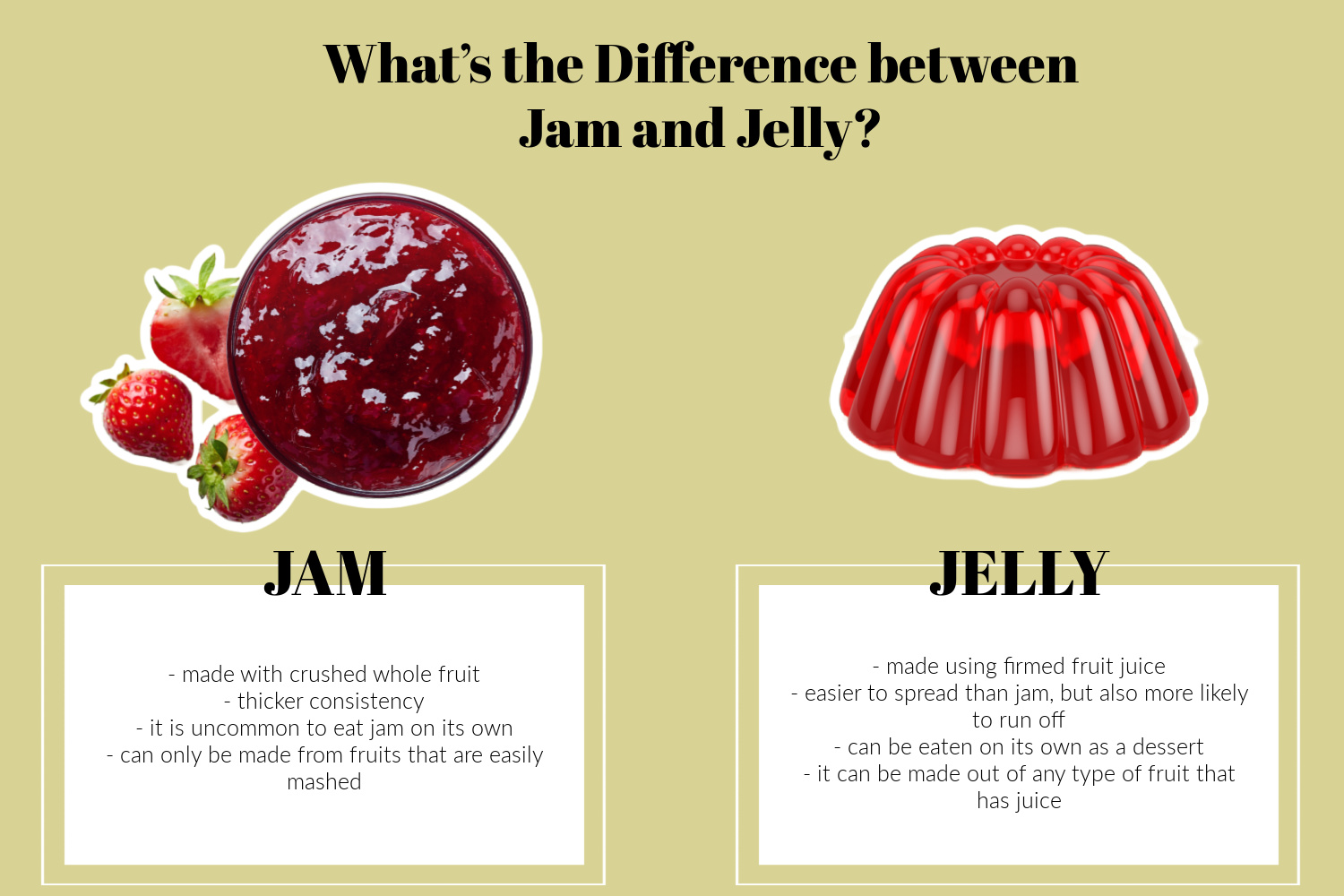Jam and jelly are both fruit spreads with different characteristics that distinguish them from one another. While they are both made from cooked fruit and sugar and have similar purposes, these spreads have unique qualities. Differentiating between jam and jelly is important to understand when selecting the appropriate spread for various recipes.

4 Differences Between Jam and Jelly
1. Ingredients
The ingredients used to make the jam and jelly makes the spreads different. Both jam and jelly are made from fruit, but they use different parts of the fruit. Jelly is made using firmed fruit juice, while jam, on the other hand, is made with crushed whole fruit.
2. Consistency
Jam and jelly have different consistencies as spreads. Because jelly is made from fruit juice, it can’t hold its shape the same way jam can. As a result, jelly is easier to spread than jam, but also more likely to run off of whatever it is spread on.
3. How It Is Consumed
How the spreads are consumed is another way jam and jelly differ. Both jam and jelly can be spread on toast, but it is uncommon to eat jam on its own. Jelly, however, can be eaten on its own as a dessert, similar to Jell-O.
4. Types of Fruit Used
The types of fruit used to make jam and jelly are distinct. Jelly is made from fruit juice, meaning it can be made out of any type of fruit that has juice. Jam, though, can only be made from fruits that are easily mashed.
Oranges, for example, can only be made into jelly because they aren’t pleasant to eat when mashed. But strawberries or peaches can be made into either jam or jelly because they are tasty when mashed.
Can Jam and Jelly Be Used Interchangeably?
Jam and jelly, when used as a spreadable condiment, can be used interchangeably. There is little difference in flavor between the two preserves because they are both sweet and fruit based.
However, jam shouldn’t be substituted for jelly in baking recipes. Because these two products differ in consistency, swapping jam for jelly can cause a baked treat to be too thin and not hold its shape.
Additionally, using jam when jelly should be used, can cause a dessert filling to be too firm.
Leave a Reply